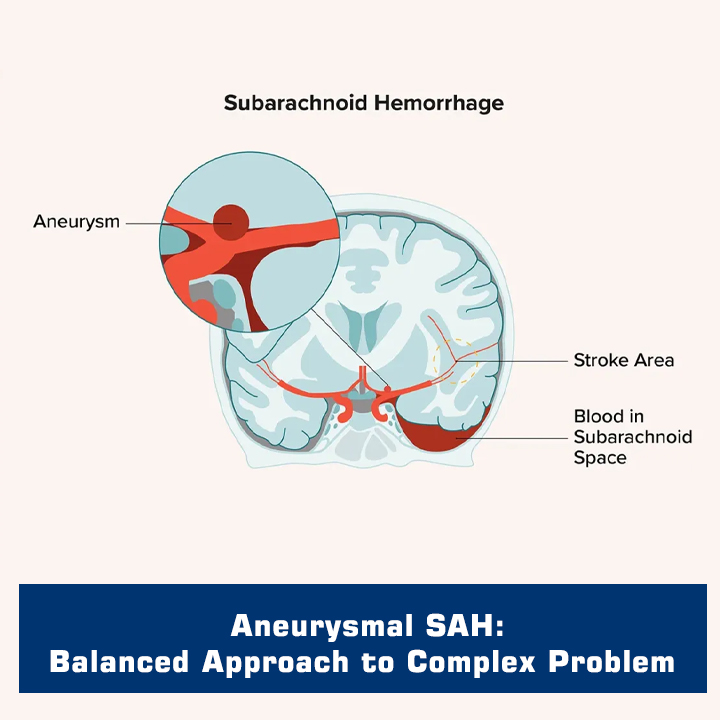


Introduction
Aneurysmal SAH is one of the leading causes of morbidity and mortality in neurosurgery. Among the many causes of SAH, aneurysmal SAH stands out in view of its unique natural history of vasospasm i.e., narrowing/constriction of brain vessels. The primary aim of treatment offered is to secure and exclude the aneurysm from circulation thereby reducing the risk of rebleed and mortality. There are two main options available to secure an aneurysm – Surgical (Clipping) or Endovascular (Coiling).
Primary Goal of Treatment in Aneurysmal SAH
The primary goal of treatment is to prevent the rebleed and re-rupture of an aneurysm by securing an aneurysm. As discussed earlier two options are available surgical way or endovascular approach.
Indications for Clipping or Coiling
Here in our centre, we consider every patient of aneurysm on an individual basis, so after a complete set of investigations like NCCT, CTA/DSA group of cerebrovascular and Endovascular experts sit together along with patients’ caretakers and discuss the pros and cons of both modalities to come to a common acceptable decision.
Although there are certain groups of patients where we prefer clipping over coiling like young patients with anterior circulation aneurysm or wide neck aneurysm to avoid stent and thereby avoiding starting antiplatelet. However, in patients with posterior circulation or blister aneurysms endovascular clipping is preferred over surgical clipping.
Patients Prepare for Coiling or Clipping
Preoperative preparation for aneurysm surgery involves a thorough evaluation, which includes medical history review, physical examination, and imaging studies (such as NCCT, CT angiography, or magnetic resonance angiography and DSA with 3D reconstruction). Vasospasm is also looked for with the help of TCD or at the time of DSA. It is essential to inform the surgical team about any allergies, medical conditions, or medications. Sometimes in addition to usual surgical clipping or endovascular coiling, a patient may need EVD/VP shunt for hydrocephalus.
Procedure Performed for Clipping or Coiling
Coiling or Clipping is typically performed under general anaesthesia. An incision is made along the scalp. A surgical microscope is commonly used during the procedure to provide a magnified view, improving precision and minimizing the risk of damage to surrounding structures.
In coiling, only a small needle puncture is done commonly in the groin (femoral artery) and sometimes in the wrist (radial artery) and the procedure is performed with small calibre catheters and wires in the Neuroangio suite.
Clipping Differ from Coiling
Clipping and coiling are two different approaches to treat aneurysm. Clipping involves the surgically securing an aneurysm by applying clip around the neck of an aneurysm, while coiling involves the placement of multiple coils inside an aneurysm through vessels. Sometimes to keep coils stay in an aneurysm one has to take the help of balloons and stents also. The choice between the two procedures depends on various factors, including the patient's overall health, anatomy, and surgeon's expertise.
Postoperative Care and Long-term Outcomes
After the procedure (clipping or coiling), patients are closely monitored in the postoperative intensive care unit (NSICU) typically for a period till the vasospasm lasts. Vital signs, neurological status, and incision site/Pulses are regularly assessed. TCD is routinely done to assess the severity of vasospasm. Long-term outcomes of both procedures are generally favourable, except there is a small risk of recurrence in the long-term in coiling patients, which may or may not need treatment.
Conclusion:
Securing an aneurysm either by clipping or an endovascular approach is a standard procedure accepted worldwide. Preoperative preparation, intraoperative neuromonitoring, continuous monitoring of vasospasm and aggressive treatment of the same have better outcome and prognosis.
